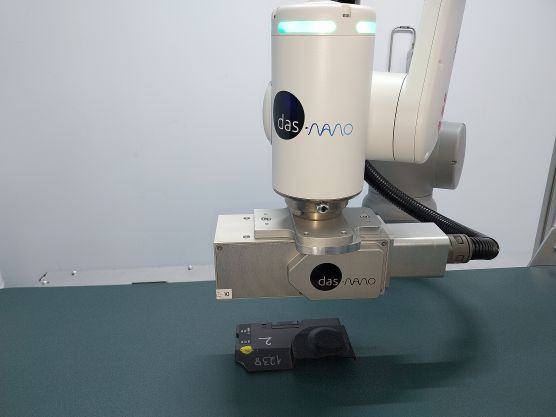CIC energiGUNE organises in Vitoria-Gasteiz the final seminar of the HIGREEW project, which has already made possible the installation of an organic redox flow battery prototype

On 16 and 17 May, the Basque benchmark centre for energy storage brought together industrial players and material and battery developers who have managed, within the framework of the European HIGREEW project, to take organic materials from the laboratory to a prototype that has already been installed at Siemens Gamesa’s facilities in Zaragoza.
The experts gathered in Vitoria-Gasteiz also analysed the contribution of redox flow technology to the decarbonisation of the economy through the storage of renewable energy
 CIC energiGUNE, a leading Basque research centre in electrochemical energy storage, thermal energy storage and conversion and hydrogen technologies, held the second and final seminar of the European HIGREEW project in Vitoria-Gasteiz on 16 and 17 May. The project, led by the Basque centre, has demonstrated the technical feasibility of its proposal after three years of research, backed by the manufacture and installation of a prototype of an organic redox flow battery. More than 70 participants from 10 different EU countries took part in this meeting, which also analysed the future of redox flow batteries.
CIC energiGUNE, a leading Basque research centre in electrochemical energy storage, thermal energy storage and conversion and hydrogen technologies, held the second and final seminar of the European HIGREEW project in Vitoria-Gasteiz on 16 and 17 May. The project, led by the Basque centre, has demonstrated the technical feasibility of its proposal after three years of research, backed by the manufacture and installation of a prototype of an organic redox flow battery. More than 70 participants from 10 different EU countries took part in this meeting, which also analysed the future of redox flow batteries.
“In the three years of project development, the HIGREEW consortium has managed to take the concept of organic active materials from the laboratory to the battery prototype and, therefore, we are one step closer to bringing the technology to the market,” said Raquel Ferret, Business Development Manager at CIC energiGUNE. In fact, the installation of the redox battery prototype was carried out last March at Siemens Gamesa’s headquarters in Zaragoza, with a view to its commissioning at the end of the HIGREEW project in May.
In this context, and under the title “Flow batteries, bringing technology closer to the market”, the seminar showed redox battery use cases from the most relevant industrial players in the field of stationary energy storage, as well as from materials and battery developers. It also provided access to new market trends, together with a scientific overview of key battery components, and even outlined ideas, from a political point of view, on the new battery regulation.
In addition, the meeting served to define the way forward with regard to industry needs and trends, as well as the potential contribution of redox flow technology to the decarbonisation of the economy through its ability to facilitate renewable energy storage.
Objectives of HIGREEW
The European HIGREEW project, led by CIC energiGUNE, aims to develop a new, low-cost, water-based organic electrolyte to obtain more sustainable, competitive, affordable batteries with better performance that can replace materials such as vanadium – currently the most widely used – which is toxic and difficult to obtain in Europe. In this sense, this type of redox flow batteries are postulated as a feasible alternative because, unlike vanadium batteries, they are based on abundant and easily accessible elements and also have a low environmental impact.
Milestones achieved during the project in the development of materials, such as new organic compounds that enable high-voltage 1.3-1.5V batteries, and more selective membranes, stand out for their low-cost processing, which translates into power increases of more than 10% and systems with greater durability and lower cost.
Thanks to the development of different generations of materials, the first generations of materials have been integrated into a 5kW prototype, while work continues on the processing and scaling of the latest generations of materials. In terms of design, new cell and stack designs and, above all, the construction of a fully functional prototype based on an alternative chemistry. This prototype has a system control adapted to the new electrolytes that will allow an increase in the operating efficiency of the battery, as is currently being tested in a real environment.
The HIGREEW consortium, led by CIC energiGUNE, is made up of 10 leading organisations in materials, storage systems and renewable energies: Gamesa Electric, Universidad Autónoma de Madrid, Centre National de la Recherche Scientifique, C-Tech Innovation Ltd, University of West Bohemia New Technologies – Research Centre, Pinflow Energy Storage, Uniresearch, Siemens Gamesa Renewable Energy Innovation and Technology and Fraunhofer Institute for Chemical Technology.
As a further result of the project, CIC energiGUNE has started the development of a new generation of electrolytes based purely on organic materials, which will allow competing in performance with vanadium electrolyte (>1.25V) while decreasing electrolyte costs (<50€/kWh), which currently represents the main cost in these systems (>150€/kWh).




